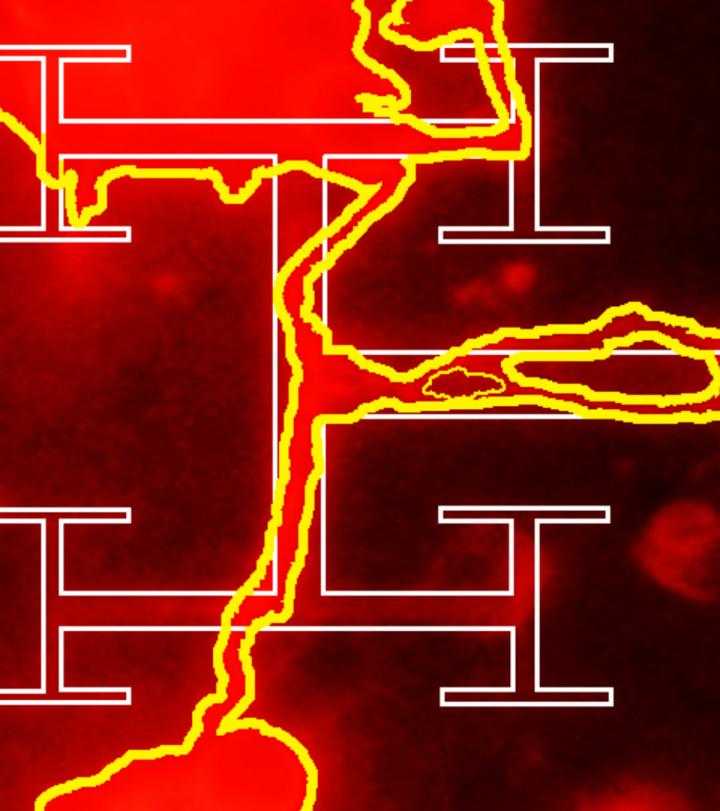I was a bit surprised to find that this University of Oregon story was about a patent. Here’s more from a July 28, 2015 news item on Azonano,
Richard Taylor’s vision of using artificial fractal-based implants to restore sight to the blind — part of a far-reaching concept that won an innovation award this year from the White House — is now covered under a broad U.S. patent.
The patent goes far beyond efforts to use the emerging technology to restore eyesight. It covers all fractal-designed electronic implants that link signaling activity with nerves for any purpose in animal and human biology.
Fractals are objects with irregular curves or shapes. “They are a trademark building block of nature,” said Taylor, a professor of physics and director of the Materials Science Institute at the University of Oregon [UO]. “In math, that property is self-similarity. Trees, clouds, rivers, galaxies, lungs and neurons are fractals. What we hope to do is adapt the technology to nature’s geometry.”
Named in U.S. patent 9079017 are Taylor, the UO, Taylor’s research collaborator Simon Brown, and Brown’s home institution, the University of Canterbury in New Zealand.
A July 28, 2015 University of Oregon news release (also on EurekAlert) by Jim Barlow, which originated the news item, continues the patent celebration,
“We’re very delighted,” Taylor said. “The U.S. Patent and Trademark Office has recognized the novelty and utility of our general concept, but there is a lot to do. We want to get all of the fundamental science sorted out. We’re looking at least another couple of years of basic science before moving forward.”
The patent solidifies the relationship between the two universities, said Charles Williams, associate vice president for innovation at the UO. “This is still in the very early days. This project has attracted national attention, awards and grants.
“We hope to engage the right set of partners to develop the technology over time as the concept moves into potentially vast forms of medical applications,” Williams added. “Dr. Taylor’s interdisciplinary science is a hallmark of the creativity at the University of Oregon and a great example of the international research collaborations that our faculty engage in every day.”
Here’s an image illustrating the ‘fractal neurons’,

Caption: Retinal neurons, outlined in yellow, attach to and follows branches of a fractal interconnect. Such connections, says University of Oregon physicist Richard Taylor, could some day help to treat eye diseases such as macular degeneration. Credit: Courtesy of Richard Taylor
The news release goes on to describe the ‘fractal approach’ to eye implants which is markedly different from the implants entering the marketplace,
Taylor raised the idea of a fractal-based approach to treat eye diseases in a 2011 article in Physics World, writing that it could overcome problems associated with efforts to insert photodiodes behind the eyes. Current chip technology doesn’t allow sufficient connections with neurons.
“The wiring — the neurons — in the retina is fractal, but the chips are not fractal,” Taylor said. His vision, based on research with Brown, is to grow nanoflowers seeded from nanoparticles of metals that self assemble in a natural process, producing fractals that mimic and communicate with neurons.
It is conceivable, Taylor said, that fractal interconnects — as the implants are called in the patent — could be shaped so they network with like-shaped neurons to address narrow needs, such as a feedback loop for the sensation of touch from a prosthetic arm or leg to the brain.
Such implants would overcome the biological rejection of implants with smooth surfaces or those randomly patterned that have been developed in a trial-and-error approach to link to neurons.
Once perfected, he said, the implants would generate an electrical field that would fool a sea of glial cells that insulate and protect neurons from foreign invaders. Fractal interconnects would allow electrical signals to operate in “a safety zone biologically” that avoids toxicity issues.
“The patent covers any generic interface for connecting any electronics to any nerve,” Taylor said, adding that fractal interconnects are not electrodes. “Our interface is multifunctional. The primary thing is to get the electrical field into the system so that reaches the neurons and induces the signal.”
Taylor’s proposal for using fractal-based technology earned the top prize in a contest held by the innovation company InnoCentive. Taylor was honored in April [2015] at a meeting of the White House Office of Science and Technology Policy.
The competition was sponsored by a collaboration of science philanthropies including the Research Corporation for Science Advancement, the Gordon and Betty Moore Foundation, the W.M. Keck Foundation, the Kavli Foundation, the Templeton Foundation and the Burroughs Wellcome Fund.
You can find out more about InnoCentive here. As for other types of artificial eye implants, the latest here is a June 30, 2015 post titled, Clinical trial for bionic eye (artificial retinal implant) shows encouraging results (safety and efficacy).